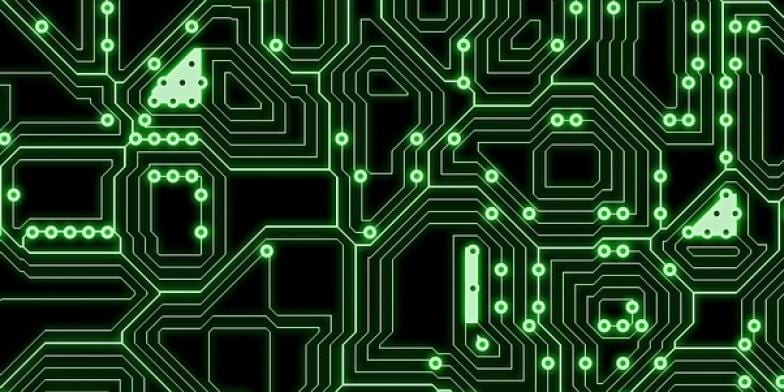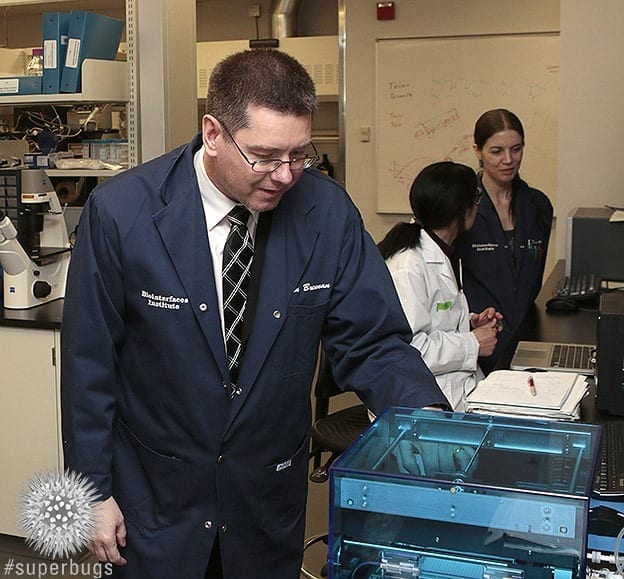
A new step forward in memristor technology could bring us closer to brain-like computing
Researchers are always searching for improved technologies, but the most efficient computer possible already exists. It can learn and adapt without needing to be progrinnammed or updated. It has nearly limitless memory, is difficult to crash, and works at extremely fast speeds. It’s not a Mac or a PC; it’s the human brain. And scientists around the world want to mimic its abilities.
Both academic and industrial laboratories are working to develop computers that operate more like the human brain. Instead of operating like a conventional, digital system, these new devices could potentially function more like a network of neurons.nov
“Computers are very impressive in many ways, but they’re not equal to the mind,” said Mark Hersam, the Bette and Neison Harris Chair in Teaching Excellence in Northwestern University’s McCormick School of Engineering. “Neurons can achieve very complicated computation with very low power consumption compared to a digital computer.”
A team of Northwestern researchers, including Hersam, has accomplished a new step forward in electronics that could bring brain-like computing closer to reality. The team’s work advances memory resistors, or “memristors,” which are resistors in a circuit that “remember” how much current has flowed through them.
The research is described in the April 6 issue of Nature Nanotechnology.Tobin Marks, the Vladimir N. Ipatieff Professor of Catalytic Chemistry, and Lincoln Lauhon, professor of materials science and engineering, are also authors on the paper. Vinod Sangwan, a postdoctoral fellow co-advised by Hersam, Marks, and Lauhon, served as first author. The remaining co-authors—Deep Jariwala, In Soo Kim, and Kan-Sheng Chen—are members of the Hersam, Marks, and/or Lauhon research groups.
“Memristors could be used as a memory element in an integrated circuit or computer,” Hersam said. “Unlike other memories that exist today in modern electronics, memristors are stable and remember their state even if you lose power.”
Current computers use random access memory (RAM), which moves very quickly as a user works but does not retain unsaved data if power is lost. Flash drives, on the other hand, store information when they are not powered but work much slower. Memristors could provide a memory that is the best of both worlds: fast and reliable. But there’s a problem: memristors are two-terminal electronic devices, which can only control one voltage channel. Hersam wanted to transform it into a three-terminal device, allowing it to be used in more complex electronic circuits and systems.
Read more: Computers that Mimic the Function of the Brain
The Latest on: Brain-like computing
[google_news title=”” keyword=”Brain-like computing” num_posts=”10″ blurb_length=”0″ show_thumb=”left”]
via Google News
The Latest on: Brain-like computing
- 'Inspired by the human brain': Intel debuts neuromorphic system that aims to mimic grey matter with a clear aim — making the machine exponentially faster and much more power ...on April 27, 2024 at 10:40 pm
Intel's Hala Point is the world's largest “brain-based” computing system with 1.15 billion artificial neurons.
- China developed its very own Neuralink — Neucyber brain interface comes from a neurotechnology firmon April 27, 2024 at 4:35 am
A Chinese company backed by the state, Beijing Xinzhida Neurotechnology, introduces its Neucyber brain interface tested with a monkey and a mechanical arm.
- High-precision blood glucose level prediction achieved by few-molecule reservoir computingon April 26, 2024 at 9:24 am
A collaborative research team from NIMS and Tokyo University of Science has successfully developed an artificial intelligence (AI) device that executes brain-like information processing through ...
- Scientists use salt, water to prove human brain-like computer can existon April 26, 2024 at 4:13 am
Currently our computers are nowhere near as powerful or sophisticated as the brain. Furthermore, the human brain doesn’t need much in terms of materials to carry out a superhuman level of commands at ...
- First experimental proof for brain-like computer with water and salton April 25, 2024 at 7:03 am
Theoretical physicists at Utrecht University, together with experimental physicists at Sogang University in South Korea, have succeeded in building an artificial synapse. This synapse works with water ...
- China Creates 'Neucyber,' Its Version of a Neuralink Brain Chipon April 25, 2024 at 5:58 am
China has reportedly developed a brain-computer interface chip called Neucyber that allows a monkey to control a robotic arm with only its thoughts.
- Quantum Computers Can Now Run Powerful AI That Works like the Brainon April 22, 2024 at 5:30 am
Seven years later the transformer, which enables ChatGPT and other chatbots to quickly generate sophisticated outputs in reply to user prompts, is the dynamo powering the ongoing AI boom. As ...
- World’s largest neuromorphic computer by Intel works like human brainon April 19, 2024 at 6:04 am
Intel says its new brain-like computer is significantly fast, energy-efficient and it has the potential to revolutionize future AI tools.
- MIT Technology Reviewon April 19, 2024 at 3:00 am
In the world of brain-computer interfaces, it can seem as if one company sucks up all the oxygen in the room. Last month, Neuralink posted a video to X showing the first human subject to receive its ...
- When technology can read your brain waves, who owns your thoughts?on April 18, 2024 at 10:34 am
Though the technology like this is still relatively nascent, neural rights activists and cornered lawmakers want to be ready for when it is more widespread. Critics warn companies may already possess ...
via Bing News










